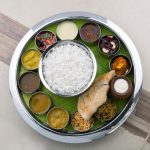Priya Chaudhari explains the dietary logic behind why you gain weight
As you learn to adjust to the fact that you or your loved one has Diabetes, one of the toughest challenges is to modify your food habits. Eating healthy, whether or not you have Diabetes, is about sticking to the basics of nutrition – the very rules you were taught as a child but never put into practice.
A common theme when you look up dos and don’ts of a so-called “diabetic diet” on the Internet will be “choose your food wisely, having small frequent meals rich in fibre, protein and low in glycaemic index”.
What is glycaemic index?
An important concept to understand is the Glycaemic Index (GI). Each time you eat a carbohydrate food, the blood glucose level in your body rises. Some carbs (carbohydrate foods) cause quick and sharp rises in your blood glucose levels and these are best kept to a minimum. Other foods cause a slow and gradual rise in blood glucose level. A food with a high GI raises blood sugar more than a food with a medium to low GI.
The Glycaemic Index (GI) is simply a ranking of foods based on the speed at which they raise blood glucose levels. Each food is given a number:
- Foods that break down quickly are given high values – they raise blood glucose quickly, and are said to have a high glycaemic index
How GI works
GI is only a small part of healthy eating plan for Diabetes. It talks about only the rate at which any given food will raise your blood glucose level. It does not say how much carb we are talking about, or what other nutrients you are getting out of that portion. For example, carrots despite being high-GI are good for you. The actual amount of carbohydrates in a carrot is low, and it provides you a lot of additional nutrients.
Foods with simple carbohydrates like sugars, refined flours, juices that break down quickly during digestion and release glucose rapidly into the bloodstream tend to have a high GI; foods with complex carbohydrates like those in vegetables and whole grains that break down more slowly, releasing glucose more gradually into the bloodstream, tend to have a low GI.
A low-GI food will release glucose more slowly and steadily, which leads to more desirable postprandial (after meal) blood glucose readings. A high-GI food causes a more rapid rise in blood glucose levels and is suitable for energy recovery after exercise or for a person experiencing hypoglycaemia.
Two foods with the same amount of carbohydrates can have different glycaemic index numbers, depending upon the type of carbohydrates they (sucrose/lactose/starch/fibre) are containing. The glycaemic index gives you a way to tell slower-acting “good carbs” from the faster “bad carbs.” You can use it to fine-tune your carb counting and help
keep your blood sugar steadier. The smaller the number, the less impact the food has on your blood sugar.
- 55 or less = Low (good)
- 56 – 69 = Medium
- 70 or higher = High (bad)
Foods that are close to how they’re found in nature tend to have a lower glycaemic index than refined and processed foods.
Factors affecting GI
GI ratings of foods depend on number of other factors like cooking methods, type of starch, dietary fibre, ripeness, processing of foods, fat and protein content etc.
Glycaemic index charts often give only one value per food, but the glycaemic effect of foods depends on a number of factors –
Cooking methods – The more cooked or over cooked a food is the more its cellular structure is broken. This causes the food to be digested quickly and raises the GI. For example, the longer you cook starches like pasta, the higher their glycaemic index will be.
Ripeness – The glycaemic index of fruits like bananas goes up as they ripen.
Processing – Flour has a higher GI than the whole grain from which it is ground as
grinding breaks the grain’s protective layers.
Other foods eaten at the same time – Adding Fat, fiber, and acid (such as lemon juice or vinegar) lower the glycaemic index. The presence of fat or soluble dietary fiber can slow the gastric emptying rate, thus lowering the GI.
It is advisable to bring down the overall glycaemic index of a meal by combining high-glycaemic index foods with foods that have lower ones, like foods rich in fibers and proteins. Look for the glycaemic index on the labels of packaged foods.
NOTE: The glycaemic response is different from one person to another. It may also vary in the same person from day to day depending on blood glucose levels, insulin resistance and other factors like age, activity level, rate of digestion of food.
The downside of the GI is that this ranking system doesn’t take into account the amount of carb in food one eats. This is where the concept of glycaemic load becomes helpful.
Glycaemic Load
People who are using GI for planning a meal should definitely know Glycaemic
Load (GL) as this is more reflective of the actual load of carbohydrates. Glycaemic load or GL reflects the quality and quantity of carbohydrate. It is calculated using the GI number as well as the amount of carbohydrate in a particular serving of a food. GL is higher for high GI foods that you might eat in large quantities. The GL also takes serving size into account. For example, considering high GI of carrots people might be reluctant to eat them. The GL of carrot however works, out to be only 6, which means they are very unlikely to affect blood sugar levels.
Calculating GL
Glycaemic load is based on the glycaemic index (GI), and is calculated by multiplying the grams of available carbohydrate in the food times the food’s GI and then dividing by
- A watermelon has a GI of 72. A 100 g serving of watermelon has 5 g of available carbohydrates (it contains a lot of water), making the calculation 5 × 72/100= 3.6, so the GL is 3.6.
Glycaemic index is defined for each type of food; glycaemic load can be calculated for any size serving of a food, an entire meal, or an entire day’s meals. The glycaemic index does not take into account the amount of carbohydrate in a food. So glycaemic load is a better indicator of how a carbohydrate food will affect blood sugar.
Similar to the glycemic index, the glycemic load of a food can be classified as low, medium, or high:
- Low: 10 or less
- Medium: 11 – 19
- High: 20 or more
For optimal health it is important to aim to keep your daily glycemic load under 100.
Watermelon and carrot explanation
A watermelon has a high GI of 72, yet a low GL of 3.6. The high GI is based on 5 cups of watermelon, not an actual serving size of 1 cup. The low GL means one serving of watermelon doesn’t contain much
carbohydrate, because it is actually mostly water. The low GL indicates that a serving of watermelon won’t have much impact on your blood sugar levels.
Carrots are another example of a low GL food that many people think will raise their blood sugar but this is not true. Carrots have a high GI of 71. However, what most people don’t know is that the GL for carrots is only 6. Therefore, unless you’re going to eat a kilo of carrots in one sitting, an average serving of carrots will have very little impact on blood sugar levels. That said, carrot juice (consuming more carrots at once or without fibres) will increase blood sugar levels.
The simplest way to use the GL is to choose foods with the lowest GI within a food group or category, and to be mindful of your serve size.
To conclude
Adopting healthy cooking methods like stir frying, steaming, boiling, grilling, baking, sautéing, stewing and roasting with liquids is advised. High heat cooking methods like frying and roasting should be avoided because they tend to produce harmful products called AGE’s (Advanced Glycation End products) that may promote complications such as neuropathy, poor wound healing, retinopathy, nephropathy and cardiovascular disease in people with Diabetes. If someone in the family has Diabetes, it is best to have at least one session with a dietician to review your cooking habits.
No food is out of bounds; we just need to be careful how much we eat and how it is cooked.
Ms Priya Chaudhari is a consultant Dietician















